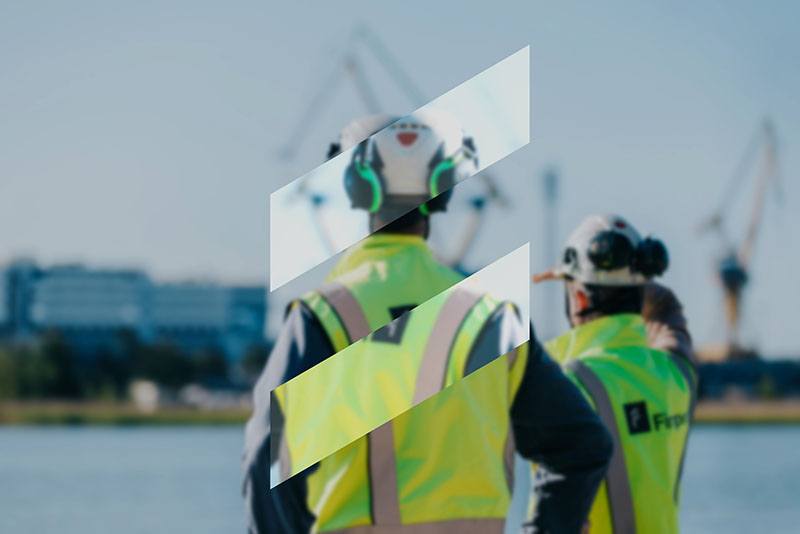Green carbon dioxide could create a billion-euro business in Finland

While there is much talk in Finland about fossil carbon dioxide as a cause of climate change, only recently has there been a discussion about green carbon dioxide. However, Finnish industry generates more green CO2 than fossil CO2. Utilizing green CO2 as a raw material reduces the need for fossil raw materials and, therefore, also reduces fossil CO2 emissions. Every ton of reused biogenic CO2 can roughly decrease an equivalent amount of fossil CO2 emissions.
While there is much talk in Finland about fossil carbon dioxide as a cause of climate change, only recently has there been a discussion about green carbon dioxide. However, Finnish industry generates more green CO2 than fossil CO2. Utilizing green CO2 as a raw material reduces the need for fossil raw materials and, therefore, also reduces fossil CO2 emissions. Every ton of reused biogenic CO2 can roughly decrease an equivalent amount of fossil CO2 emissions.
Green CO2, or biogenic CO2, originates from biological sources and does not increase atmospheric CO2 levels. It is reabsorbed into nature, creating a continuous cycle. In contrast, fossil CO2, produced by burning fossil fuels, always increases the atmospheric CO2 concentration.
The current EU Emissions Trading System sets a price for fossil CO2 emissions, ranging from 60 to 100 euros per ton of CO2 equivalent. This price is expected to remain stable until around 2035, after which it is projected to increase more than fivefold over the next decade.
In Finland, over 43 million tons of biogenic CO2 are produced annually, yet it is currently not utilized in any way. According to the Finnish Climate Panel, the largest units in the forest industry (e.g., MetsäGroup’s Kemi and Äänekoski, Stora Enso’s Imatra and Enocell, UPM-Kymmene’s Kaukas and Kymi) produce over 20 million tons of CO2 annually, of which 94% is biogenic and less than 6% is from fossil fuels. This CO2 is not utilized at present.
Options for utilizing green CO2
- No Utilization: This leads to continued global warming, as not all fossil CO2 can be captured (e.g., from cars), and there are not enough alternatives to replace fossil fuels and other fossil products.
- Storing Green CO2: Storing green CO2 is practically the same as storing fossil CO2, with a similar cost of about 100 euros per ton of CO2. For example, Microsoft purchases green CO2 from Stockholm Exergi to bury, aiming to offset its global CO2 emissions from electricity use. The agreement covers approximately 3 million tons per year, costing Microsoft around 300 million euros. According to an EU Commission announcement on February 6, 2024, to meet EU climate targets, 50 million tons of CO2 should be captured annually by 2030, and 450 million tons per year by 2050.
- Producing Fuels and Longer Lasting Products from Green CO2: This reduces the use of fossil raw materials. This process always involves a chemical reaction, adding or removing hydrogen, carbon, oxygen, and other elements to achieve the desired result. Hence, these products are called synthetic.
- In addition to synthetic fuels, green CO2 can be used to produce plastic products and various pharmaceutical and chemical industry products requiring extremely high CO2 purity.
Further processing of green CO2
Assuming 75% of the forest industry’s green CO2 (20 Mt) in Finland could be captured, about 15 million tons of CO2 would be available. If stored at a cost of 100 euros per ton, its market value would be 1.5 billion euros. However, further processing of CO2 is more profitable.
Easier methods to further process CO2 include producing methane gas or methanol using hydrogen. From 15 million tons of CO2, about 6 million tons of methane could be produced. Calculating its market value based on the current biogas producer price (around 1 €/kg), 6 million tons of synthetic methane would be worth approximately 6 billion euros.
If green methanol were produced from CO2, the amount of methanol would be around 11 million tons, with a market value close to 8 billion euros with premiums. The current market price for methanol is about 500 euros per ton, but practically all methanol is produced from natural gas. There is a growing market for non-fossil methanol in transportation and many industrial sectors where fossil-free production is a significant trend.
The most profitable approach would be to further process CO2, hydrogen, methane, or methanol into plastics, making the export value of the material only up to 15 billion euros, with the export value of the industrial end products being significantly higher.
For comparison, Finland’s total forest industry exports in 2023 were 12.1 billion euros. Thus, processing green CO2 from the forest industry has the potential to create an equally large new export sector.
Want to learn more about our expertise?
For more information, please contact:



